A DEFECTOR IN PLACE: The Strange and Terrible Saga of a Green Beret Sandinista – Part One
By Greg Walker (ret)
Prologue: Operation Patuca River, Honduras, 1983
On July 19, 1983, a group of 96 Marxist guerrillas with extensive training in Cuba and six months of combat conditioning in Nicaragua fighting U.S.-backed Contras, successfully infiltrated Honduras on foot after crossing the Coco River by boat.
The mission was planned and led by Dr. Jose Reyes Mata (“Commander Pablo Mendoza”), a well-known and highly-respected Honduran icon in the Latin American Marxist-Leninist community. The newly-formed Armed Forces of the People, or FAP, was a multi-national revolutionary army made up of Hondurans, Nicaraguans, Cubans, and two North Americans. Reyes Mata, an original founder of the Revolutionary Party of Central American Workers, Honduras (PRTC-H) under whose umbrella the FAP fell, had fought in Bolivia during the second attempt by the survivors of Commander Che Guevara’s disastrous 1967 effort to overthrow that South American country’s government. Captured, Reyes Mata was sent to prison until escaping to nearby and revolutionary-friendly Chile.
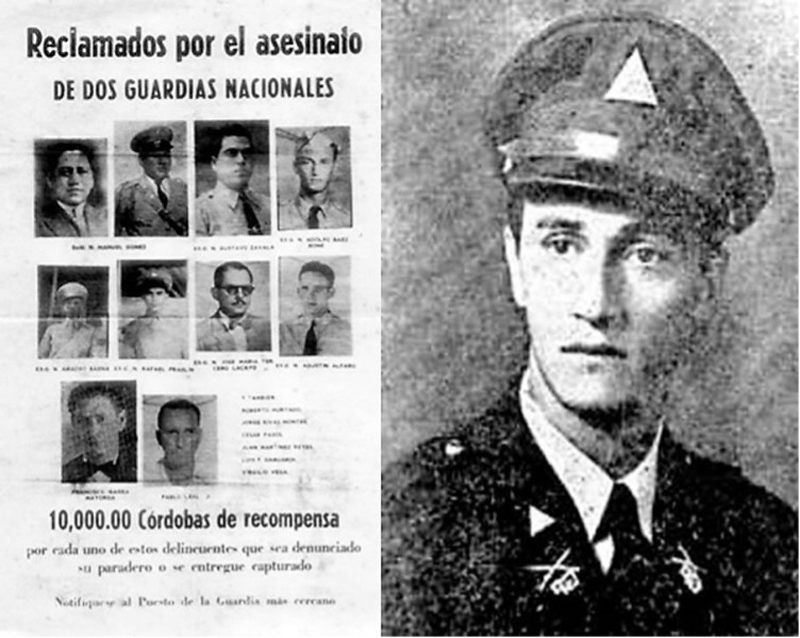
David Baez’s father, Adolfo Baez Bone, was the senior planner of the coup attempt to kill Somoza Garcia and his two sons. As the young boy was growing up, he would be challenged to “have big balls like your father!” by his father’s friends. (Credit: Enrique Saenz/Vamos)
In Chile, he continued to promote and refine for export Che’s foco theory of revolution, a theory he hoped to personally plant the seed of in Honduras. Making his way to Nicaragua, he participated in the 1979 victory of the Sandinista FSLN guerrilla war against President Anastacio Somoza Debayle, thereby earning great favor with the new Marxist government in Managua as well as in Cuba where he was a welcome visitor and, at times, a resident.
David Arturo Baez Cruz was the only known ‘Green Beret’ to have willingly left his family and military career in 1980 to join the Sandinista Popular Army (EPS) in its fight against the Contras.”
Christened “the March of Liberty toward Victory,” the column, organized into four platoons, was to establish a series of logistical FAP base camps in Honduras from which to begin additional local recruiting, training, and finally to conduct guerrilla operations against the government and armed forces of Honduras. The FAP was to be the regional vanguard movement with expected support from the external PRTC forces in El Salvador, Guatemala, and Costa Rica.
Instead, in just two months, the column would be brutally annihilated by the elite Honduran Special Forces Squadron in close cooperation with its military intelligence sister unit, Battalion 316.
This SENTINEL three-part series relies upon current declassified documents, the extensive investigative efforts of both Honduran and U.S. media outlets, the declassified war diary of Dr. Reyes Mata, and personal recollections of those with first-hand knowledge of what took place in the rugged Olancho province of Honduras, as well as at the joint U.S./Honduran air base at El Aguacate.
Much has been speculated about — and written about — Operation Patuca River. To paraphrase SAS veteran Mike Coburn, author of the book Soldier Five–The Real Truth About the Bravo Two Zero Mission, retired Special Forces soldier and author Greg Walker offers: “It’s important to portray events as they really happened. Not only because the success of Operation Patuca River crushed a nascent civil war in Honduras, but because so many related to several of the FAP column have since searched for answers regarding their loved ones, regardless of their ideology, and to date found no resolution as to what happened to them.”
It begins with the family and friends of David Arturo Baez Cruz, the only known Green Beret to have willingly left his family and military career in 1980 to join the Sandinista Popular Army (EPS) in its fight against the Contras, and in 1983 against the Honduran Army as an FSLN combat adviser to the FAP.
Part One – The birth of a lifelong vendetta
Arturo was obsessive. He wanted to contribute something to the overthrow of the Somozas. For him it was like a sense of mission, especially after the death of [our] dad at the hands of the Somozas. He did not know him, but he grew up with ‘So, you’re Baez Bone, you must have ‘guevon’ [“big balls”] like your dad.” — Eduardo Baez, brother and former Sandinista officer
David Arturo Baez Cruz was born on December 19, 1950, in Jenotepe, Nicaragua. His father, Adolfo Baez Bone, was a young lieutenant in Nicaraguan president Anastasio Somoza Garcia’s National Guard. His grandmother, whose surname was Bone, was Guatemalan. In 1947, Adolfo was expelled from the National Guard along with other officers who had supported President Leonardo Arguello over Somoza Garcia.
On April 4, 1954, Adolfo and his brother, Luis Felipe Baez Bone, along with 23 others, sought to overthrow President Somoza Garcia by assassination. Also to be killed were the president’s two adult sons, Luis and Anastasio, the latter better known as “Tachito.” On the eve of the attack, to be led by Adolfo, an informer betrayed the conspirators, and all were arrested and imprisoned. Adolfo was personally beaten and tortured by Tachito for four agonizing days before he was fatally shot. Luis was also killed as were the others. Their bodies were burned and then secretly buried in a mass unmarked grave. In an eerie forecast of things to come, Adolfo was reported to have spat in Tachito’s face and warned him, “My blood with chase you!” before his execution.
Growing up Nicaraguan
“He [Arturo] grew up sleeping in the room where the closet held his father’s remains in a wooden trunk. The bones were eventually buried, but not Baez’s hatred for the Somozas. He always had something in his head about avenging his father.” — Eduardo Baez, brother and former Sandinista officer
Friends of the families of those murdered eventually located the mass grave. Adolfo’s remains were identified — despite having been burned — and his bones were brought to the family. They were hidden away until it was deemed safe to bury them properly. Today, in Managua, there is a monument to the “Heroes of April 4, 1954” with all 25 names of those considered martyrs inscribed on it.
David Arturo Baez Cruz began growing into a young man in his father’s image. He attended school in Managua from 1960 until 1967. By then, Somoza Garcia had himself been assassinated (in 1956) and his son Luis Somoza Debayle, who had succeeded him, had just died of a heart attack. Tachito, who had served as the head of the National Guard under his older brother, took control of the presidency as well. Where Luis was seen as a benevolent dictator, Tachito emulated his father’s ruthless quest for wealth and power at the expense of the Nicaraguan people.
By 1967, David, as he would become known to his American friends and later fellow Green Berets, was active in mass street protests against the Somoza brothers. His enthusiasm became such that his mother remanded him to one of her sisters then living in San Francisco, California. David attended George Washington High School but elected to relocate to Palisades High School in Kintersville, Pennsylvania. He had an early Army enlistment date of October 20, 1969 and was formally sworn in on October 20, 1970.
By all accounts, Baez breezed through his basic and MOS training, the latter as an 11-Charlie heavy weapons specialist. He volunteered for jump school at Fort Benning, Georgia, and upon earning his military parachutist wings, again volunteered, but this time for Special Forces and Pfc. Baez attended SFQC 28A-70. Upon completing Phase 3 in late September of that year, he graduated as an E-5 (Sergeant), Heavy Weapons Leader. Being a native Spanish speaker, Sgt. Baez was assigned to the 8th Special Forces Group at Fort Gulick, Panama. Sgt. Maj. (retired) Walt Cargile, a combat veteran of the later clandestine war in El Salvador, recalled Baez from when they were both in the 8th SFG(A). “He was like a blood brother to me,” Cargile told Juan Tumayo in a 2009 story for Soldier of Fortune magazine. “We talked a lot about Nicaragua.”
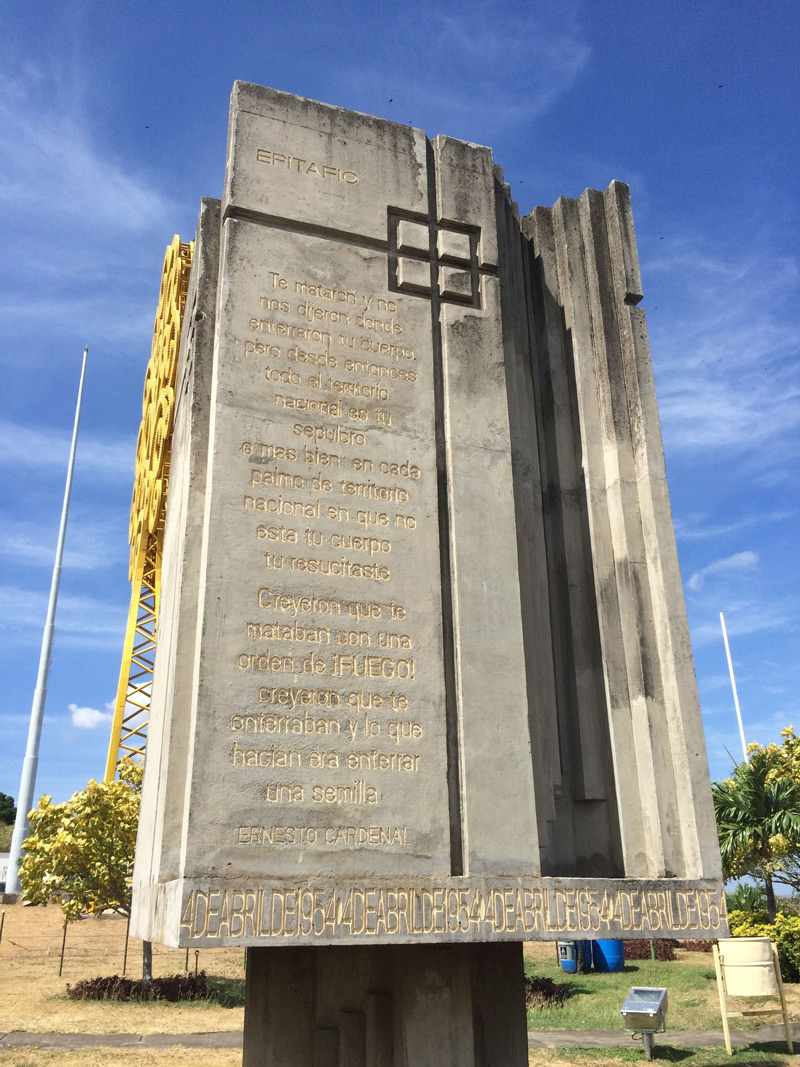
The “Monument of Heroes of April 4, 1954” commemorates Lt. Adolfo Baez Bones and the 24 others arrested, tortured, and then killed by President Anastasio Somoza Garcia in their failed coup attempt. (Historical Marker Database)
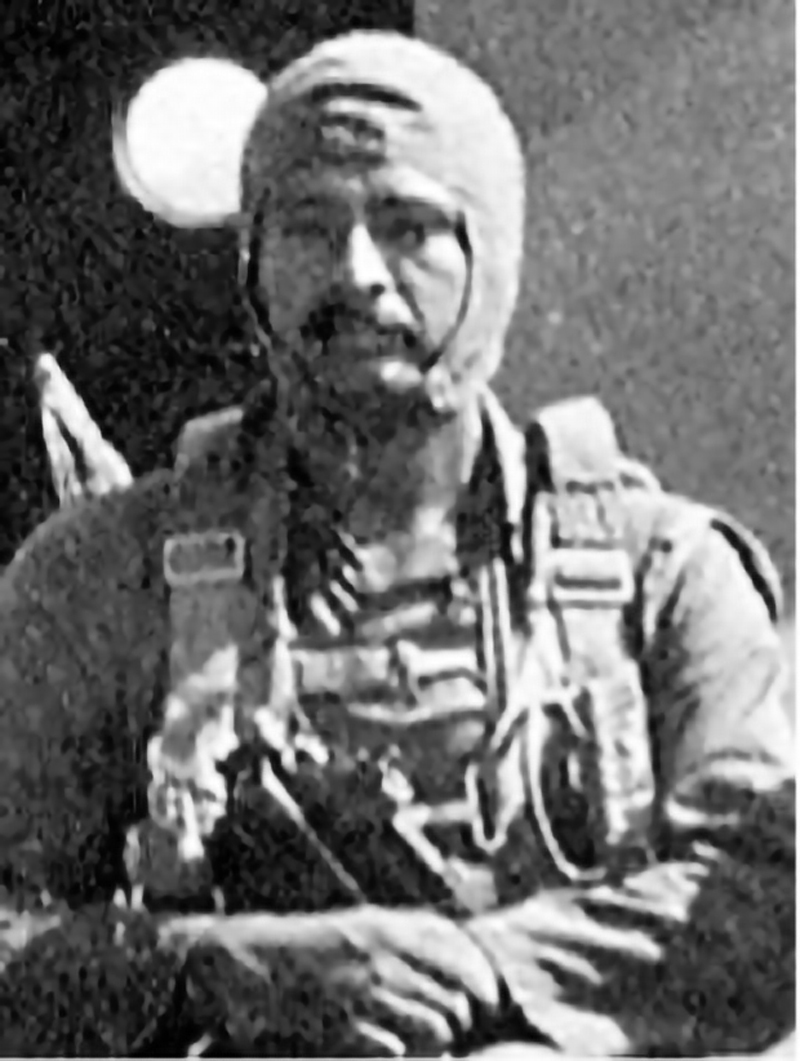
Right, Upon his defection, Lt. David Arturo Baez Cruz, formally Staff Sgt. David Baez, 3/7th Special Forces Group (A), trained the first Sandinista Popular Army airborne unit under the umbrella of the Combat Readiness Directorate. (Author collection)
Baez left the Army in April 1972, although he remained in an SF reserve status. Upon his return to the United States, he lived with a brother in New Jersey, then met and married Jennifer Raimond, a pretty blonde girl five years his junior. In November 1973, now-Specialist Baez attended Jumpmaster School at Fort Devens, MA, as a reservist. He had a knack for languages and now spoke Spanish, English, and German. Upon graduation from the Basic Non-Commissioned Officers Course in 1974, David re-enlisted on active duty and was assigned to the 10th Special Forces Group (Airborne) then at Fort Devens, Massachusetts. He was further assigned to B Company, 3rd Battalion, where he served on an operational detachment (A-Team) from May 1975 until February the following year. He lived quietly on-post with his wife and participated in the yearly Flintlock exercise in Germany where he received high accolades for his MOS expertise and fluency in German. During this period, he was promoted to Sergeant, E-5.
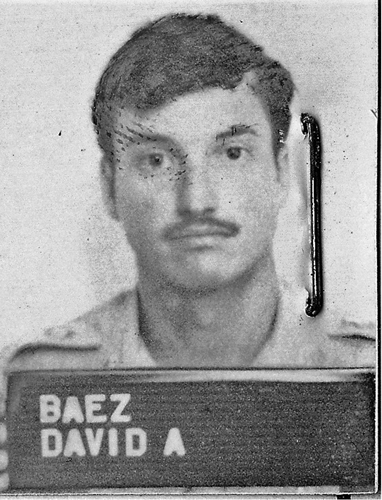
David Arturo Baez’s DA identification photo in 1975. Baez, already Special Forces qualified, was assigned to B-Company, 3/10th SFG(A) at Fort Devens, MA. (Author collection)
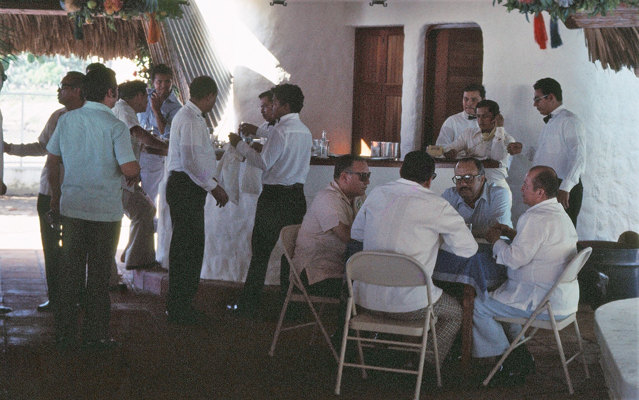
Then-commander of the Nicaraguan National Guard under his father, President Somoza Garcia, “Tachito” Somoza Debayle (seated, wearing glasses, facing camera) was directly responsible for the arrest, torture, and execution of David Baez’s father in April 1954. He would become president after his brother Luis’s death and himself be assassinated in September 1980 while living in exile in Paraguay. (Credit: Col. (retired) Paul Scharf)
By all accounts, Sgt. David Baez was the model Special Forces Green Beret. His rapid rise up the promotion ladder showed him to very possibly be a career soldier and his marriage seemed to settle the young man down. But privately, David was following the events in Nicaragua closely. The Sandinista National Liberation Front, or FSLN, had been founded in 1961. It became militarily operational in 1974, and by 1976, was swiftly gaining power and influence as it battled now-President Somoza Debayle’s National Guard. That was the same Somoza who Baez held personally responsible for his father’s tortured death in 1954. Eduardo Baez would later recall his older brother ruminating about being stateside and in “the gringo army” when he said, “I should be there firing bullets against Somoza!” Eduardo himself joined the Sandinista guerrillas and would become an officer in the Sandinista Popular Army once Somoza agreed to abdicate power in July 1979.
Return to Panama
“Baez and I were ASTs together. We were always the first ones in the team room in the mornings following PT. That’s where I spoke with him one-on-one.” — Master Sgt. (retired) Leamon Ratterree, 3/7th Special Forces Group (Airborne)
The year 1975 was a dismal one for Special Forces. With the end of the war in Vietnam, the United States Army was restructuring itself. Special Forces, which had seen rapid expansion during the war, was now on the chopping block. The 5th Special Forces Group (A) was among the first to see its ranks culled by both involuntary separations from service and normal attrition. The 8th Group, best known for its significant contribution to seeing Che Guevara run to ground in Bolivia in 1967, was to be deactivated. It was only through clever politicking and the documented rapid expansion of communism and Marxist-inspired revolution in Latin America that the 8th was honorably transitioned and became the 3rd Battalion, 7th Special Forces Group (A) in Panama.
The attrition of seasoned Latin American veterans wearing the green beret to include their language and cultural capabilities as the 8th Group’s colors were lowered demanded an influx of, among other skills, Spanish language-qualified speakers. Special Forces in Panama not only conducted mobile training teams throughout Central and South America but also provided military subject matter experts as instructors for the School of Americas (SOA), also located at Fort Gulick.
In March 1976, Sgt. David Baez found himself on leave back to Panama for this very reason. He would be promoted to Staff Sergeant, E-6, that June. Now he was an experienced non-commissioned officer with invaluable experience from his tour with 10th Group in unconventional warfare to include setting up and running clandestine and covert urban guerrilla cells. His tradecraft training with practical field exercises like Flintlock included surveillance techniques, lock-picking, hard and soft target assessments, demolitions, infiltration and exfiltration techniques, recruiting and developing informants, as well as counter-guerrilla operations.
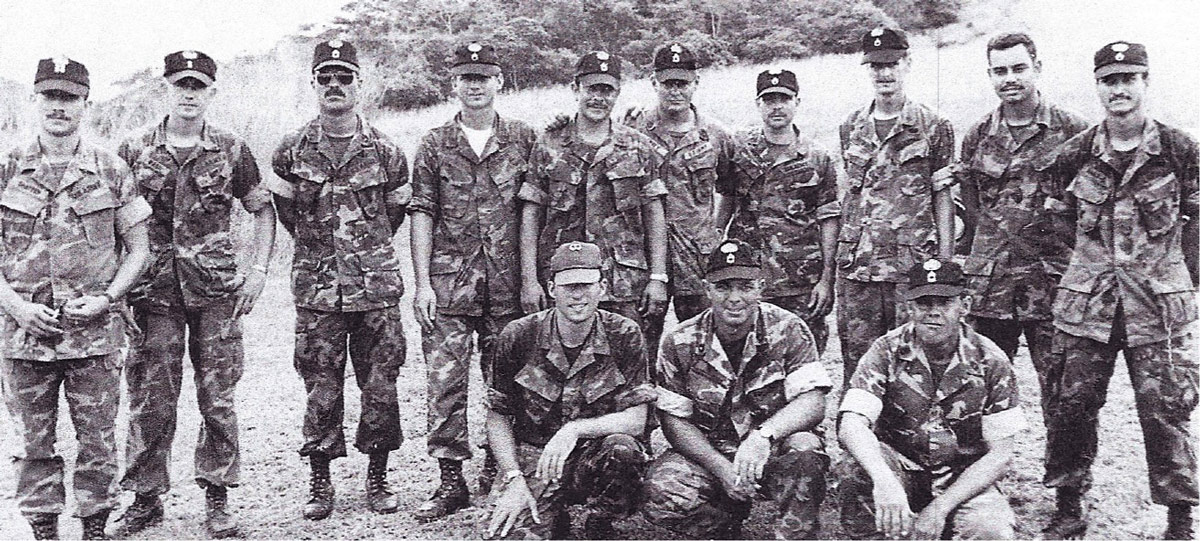
ODA 5, 3/7th SFG(A), taught military parachuting at Fort Sherman, Panama. The team provided expert instruction and refresher courses for both U.S. and foreign allied airborne forces, the latter often attending additional courses at the School of the Americas then on Fort Gulick. David Baez (standing, far right) was a popular addition to the team upon his arrival from the 10th SFG(A) at Fort Devens, MA. (Robert K. Brown Collection)
“David genuinely switched to the Sandinistas. He imagined himself as a Che Guevara-type guerrilla leader.”– Master Sgt. (retired) Leamon Ratterree, 3/7th SFG(A).
Upon his arrival at Fort Gulick, the young sergeant swiftly obtained on-post quarters for himself and his wife. He was initially assigned to Company A and ODA 5, the Airborne training team. His place of duty was at Fort Sherman, home of the Army’s jungle warfare school, and where Special Forces provided both internal and external airborne training for its own and foreign students attending the School of the Americas. It was good duty and immensely comfortable for those on ODA 5. Off-duty time was spent scuba diving, open ocean fishing, treasure hunting, and on shopping trips to both Colon and Panama City.
Baez was immediately at home and quickly became popular with his rich sense of humor, professionalism, and high intelligence. His language capability garnered him a secondary MOS as an interpreter/translator. He was awarded his Senior Parachutist wings, and after an MTT to Puerto Rico, he was presented with a Letter of Commendation signed by the battalion commander, Lt. Col. Roger Donlon, the first recipient of the Medal of Honor during the war in Vietnam. It seemed like David Arturo Baez had finally found his home.
However, being as close as he was geographically to Nicaragua, he maintained even more contact with his immediate and extended family, most of whom were not so much Sandinista in ideology but anti-Somoza. He was easily able to physically visit his birth country and by now Eduardo was in the mountains with the guerrillas. It was during this period that Baez elected to arrange to return to Nicaragua to join the revolution.
From Delta Force Selection to becoming a “long hair” Green Beret
In September 1978, having successfully passed the interview process held at the battalion headquarters on Fort Gulick, Staff Sgt. Baez began the intense process of qualifying to become an operator with the 1st Special Forces Operational Detachment – Delta. On paper, his military career supported his attending selection as a viable candidate. His evaluation reports were consistently high and his peers’ assessments of him likewise encouraged the Delta Force recruiting team sent to Panama.
At 5-foot-8 and 150 pounds, with brown hair and brown eyes, David Baez could easily fit in anywhere and draw little attention to himself while doing so. He was boyishly handsome with a disarming smile that belied his intuition and intentions. Physically, he was lean and far stronger and tougher than he looked. For the Delta recruiters, these attributes, along with his intelligence and answers to their questions, made him a strong candidate.
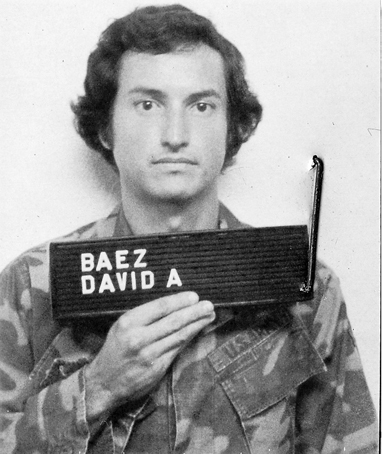
After an injury during Delta Selection saw him returned to 3/7th SFG(A) in Panama, Staff Sgt. Baez interviewed and was selected for the battalion’s “longhair team”, or AST. He would travel throughout Central America in his new intelligence-gathering role to include El Salvador. (Author collection)
An injury during the initial phase of selection saw David returned to Panama with an invitation to return to once he’d healed. Instead, Baez volunteered to interview for the secretive “longhair team” known as the AST, or Area Study Team, an internal intelligence-gathering function within the battalion. Composed of specially-selected and trained Special Forces soldiers, the AST traveled throughout Central and South America providing a host of vital and highly-classified services to the battalion commander as well as the U.S. Southern Command at Quarry Heights. Possessing Top Secret (TS) as well as Sensitive Compartmented Information (SCI) clearances, an AST operator had access to immensely critical as well as valuable information and intelligence products. The AST also interfaced with all U.S. intelligence agencies as well as allied foreign intelligence organizations and assets.
In December 1979, David Baez was reassigned to the AST. He was also identified for promotion to Sergeant First Class, E-7, and put on the promotion list. According to Leamon Ratterree, Baez was included in some of the first AST missions to El Salvador in 1979 and 1980. Those missions offered him the opportunity to gather information on the emerging restructuring and training of Salvadoran combat units to better counter the five guerrilla armies of the Farabundo Marti National Liberation Front (FMLN). It was information he would later use to restructure and train the first EPS Irregular Warfare Battalions in their fight against the Contras.
By this time, Baez was preparing to leave the Army under the pretense of a family emergency in Nicaragua. In his interview with Juan Tumayo, SF Lt. Col. (retired) Art Zieske, S-3 and then XO for 3/7, recalled David’s sharing of his plan. “He told us in confidence that he was preparing to separate from the Army, as he’d received word from the Nicaraguan government that if he did not return to Nicaragua, his family would be in grave danger.” Zieske added that Baez stated he’d have to join the EPS to protect his family.
Leamon Ratterree told me that Baez “made some trips to Managua after it fell to the Sandinistas. He linked up with his old buddies. I am certain that was what convinced him to join up.” Baez told Ratterree of his many relatives in the FSLN, among them Commander Luis Carrion Cruz, who once stated “that to be a revolutionary in Nicaragua meant joining the Frente Sandinista.” Carrion Cruz was one of the original nine-man Sandinista national directorate and the revolution’s first prime minister of the interior or Secret Police. Baez was also on friendly terms with Gen. Joaquin Cuadra LaCayo, the first Sandinista Chief of Staff of the Army, and EPS Lt. Col. Alvaro Boltodano Cantarero, then chief of the EPS Combat Readiness Directorate. Perhaps his most important relationship was with Col. Ricardo Wheelock Roman, then the chief of the Military Intelligence Directorate for the EPS.
As the son of one of the original heroes of the April 4, 1954 failed coup against the Somozas, David Baez was as close to revolutionary royalty as one could be in the FSLN. “He bought the Sandinista revolutionary line hook, line, and sinker,” offered Eduardo Baez to Juan Tumayo in 2009.
In December 1979, Baez took an emergency leave to travel to Managua, Nicaragua. He returned with a formal letter from his grandparents stating that their advanced age required their grandson to leave the Army and return to Nicaragua to work on their coffee farm. The letter, formally translated into English by the School of the Americas at Baez’s request, also offered if he did not return, the grandparents would lose the farm. Baez submitted a formal request for a compassionate hardship discharge which, upon review, was granted. He was honorably discharged on August 22, 1980.
No one at the U.S. Southern Command apparently blinked an eye upon his departure for Managua. Leamon Ratterree recalls his last visit with Baez. “[The] S2 wasn’t tracking Baez. I talked to him at Kobbe Beach the day before his flight to Managua. He had out-processed and was inebriated. He was quite open about his intentions and quite enthusiastic about ‘the cause’.”
In an August 2001 interview with La Prensa’s Roberto Fonseca, Eduardo Baez revealed his brother’s final meeting before defecting. “[He] came to Nicaragua. He spoke then with Commander Luis Carrion, who is our cousin, and raised his interest to come, so I think Luis Carrion gave him an endorsement, a go-ahead.” Baez also met with Alvaro Baltodano and Joaquin Cuadra. Both also encouraged him to defect and join the EPS. It is surmised, to prove his new loyalty to the revolution, Baez would have to deliver a substantial intelligence packet to the Sandinistas, something he’d been able to construct in his position as an AST. What that information and intelligence was has never been revealed. In 2019, Leamon Ratterree again expressed his concerns about Baez. “[He] sometimes was TDY to SouthCom at Quarry Heights. This was of great concern to me, as he had access to operational details while planning to defect.” Again, no one in a position of authority to raise a red flag did so.
Upon his arrival in Managua, David Arturo Baez Cruz was commissioned as a lieutenant in the Sandinista Popular Army. Requesting to immediately join in combat operations against the Contras, he was instead assigned to the Combat Readiness Directorate where his assignment was to train the first EPS Airborne unit and later the early Irregular Warfare Battalions. Later, he would be assigned to the Pedro Altamirano Irregular Warfare Battalion, based in Montelimar. He would participate almost non-stop in combat operations focused in the critical high mountain area of Kilambe Massif, where Contra units were attempting to establish forward operating bases and to recruit additional fighters.
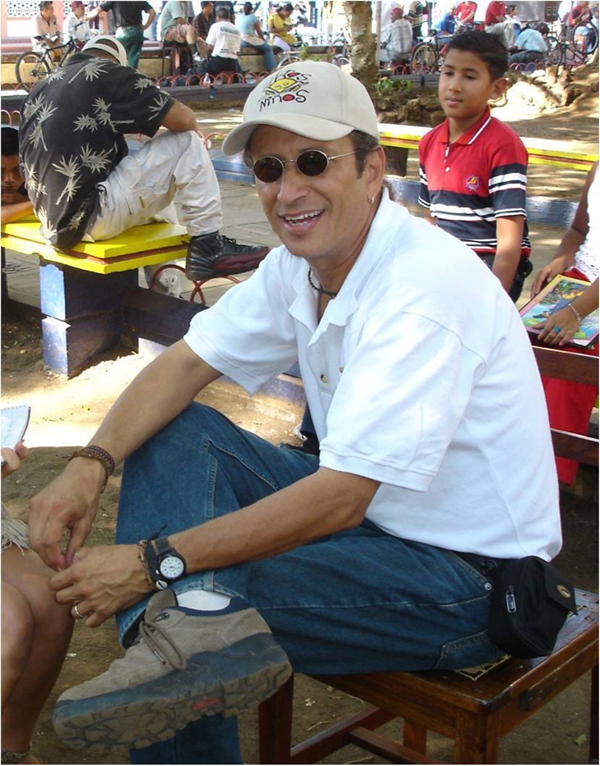
Eduardo Baez Cruz, David Baez’s younger brother, fought as a Sandinista guerrilla and later became an officer in the Sandinista Popular Army. Unhappy with what the FSLN failed to do after the revolution, he left the party in 1986 and founded the Books for Children Foundation. Eduardo never stopped searching for his brother’s remains. He died in May of 2010. (Books for Children)
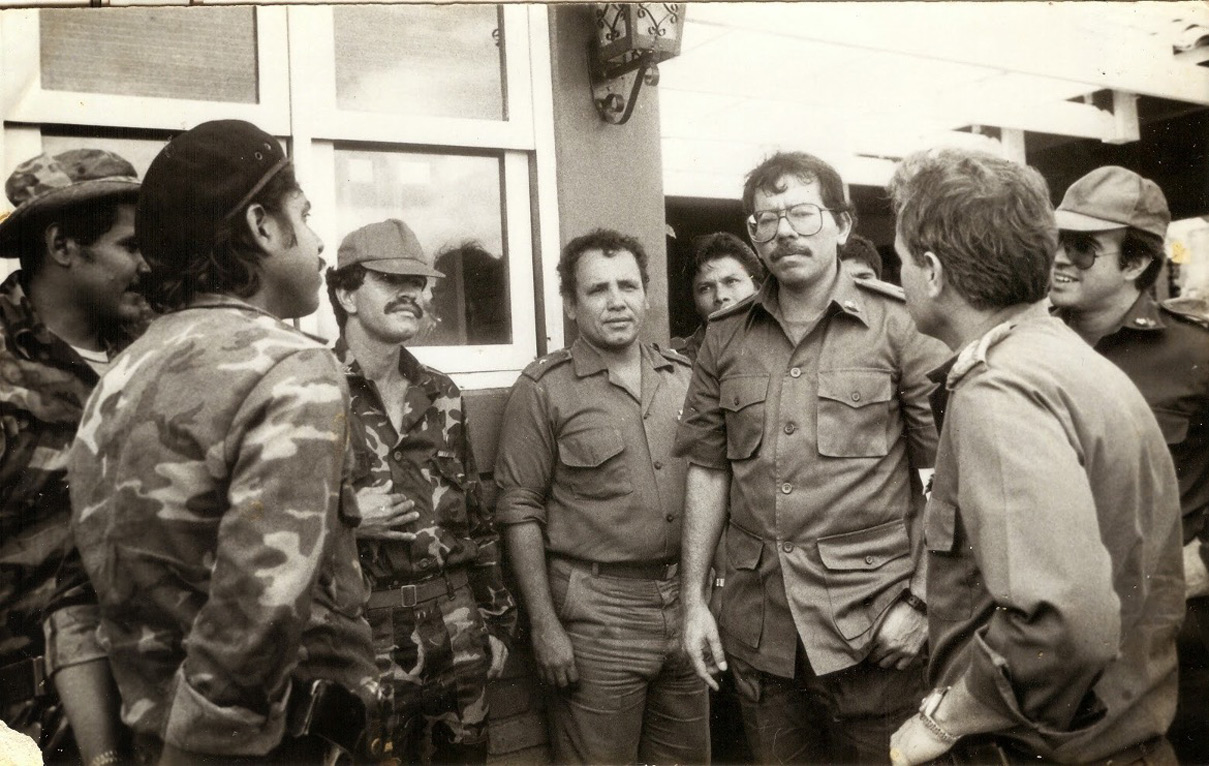
Just prior to his defection, David Baez Cruz took an emergency leave and traveled to Managua. There he met with his cousin, Cmdte. Luis Carrion Cruz, head of the Secret Police, and Cmdte. of the Army Joaquin Cuadra Lacayo. It is unknown but quite possible he also met President Daniel Ortega Saavedra during his interview process. (L-R) Joaquin Cuadra Lacayo, Luis Carrion Cruz, Daniel Ortega Saavedra. (Nicaragua This Is Your History)
“[He] sometimes was TDY to SouthCom at Quarry Heights. This was of great concern to me, as he had access to operational details while planning to defect.”
He swiftly made captain and became part of a five-man special mobile team operating on the Honduran-Nicaraguan border in “no man’s land.” Hunting Contra infiltrators, these units were sometimes joined by Green Beret combat advisers from the 7th Special Forces Group.
Although deployed for months at a time, Baez was able to re-marry (his first wife, Jennifer, had left him and returned to the United States) and father three children. In May 1983, he met with his brother, Eduardo, and shared that he had volunteered for a special mission. He was to be the personal bodyguard to Dr. Jose Reyes Mata, a Honduran Marxist revolutionary who was taking 96 men and women, all combat-proven guerrillas, into Honduras. Reyes Mata, a legend to Latin American revolutionaries, required additional assistance and protection per the Sandinista High Command. Eduardo recalls his brother asking him to take care of his children while he was away and agreeing he would use the nom de guerre Adolfo — their father’s name — so Eduardo would know if he was captured or killed and the news broadcast or otherwise relayed back to the family. He would be entering Honduras in a Contra uniform and carrying no identification of any type.
To further isolate his association with the Intelligence Directorate, Baez “disappeared” from the EPS radar screen, joining Reyes Mata and the column’s members in a secure compound outside of Managua.
In mid-July 1983, now-Major David Arturo Baez Cruz forded the Coco River to wage war in Honduras.
***
In the November 2022 Sentinel:
Part Two – “Operation Patuca River, a Classic Hammer and Anvil Strategy,” results in the annihilation of the FAP by the Honduran Special Forces. Thirty-six guerrillas are captured at the campaign’s conclusion to include Dr. Reyes Mata, Comandante David Baez, and Padre James Carney. The story of what became of them will now finally be told.
ABOUT THE AUTHOR — Greg Walker is an honorably retired “Green Beret”. He served with the 3/7th Special Forces Group (ABN) in Panama from 1982 until 1985. He is a Life member of the Special Operations Association and Special Forces Association. Today Greg lives and writes from his home in Sisters, Oregon, along with his service pup, Tommy.
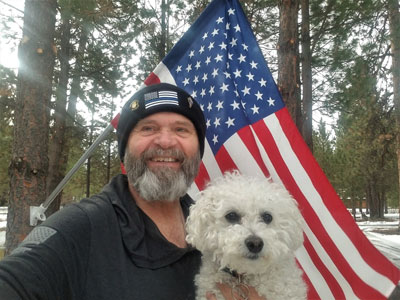
I knew David Baez when I was with 3/7 SFGA from 78 to 81. I was with ODA-6 and later on with ODA-14. I went to flight school in 81/82 and returned to Panama where I was flying UH-1s and UH-60s. I can remember dropping off Ratteree and group many times in El Sal.
I am interested in reading more about this.
I was at Aguacate in 83 84. I was with the 43rd Eng Det, 46th Eng Bn. We were supporting oppositions out of there.
My dad was @ Ft.Devans 10th group ODA 325 0r 326….pic is blurry! 77-80….He fell at Ft Devans during a repelling drill/execrise…never spoke about much at all n general. although I ve found he left like 40 notebooks /journals. Havent found anything specific until last night…..wrote he had a few close calls in NA and CA. Hoped what we did was good….He didnt say much in any context and this is all I found. Few vague lines…ao anyone know if this could be “CA”